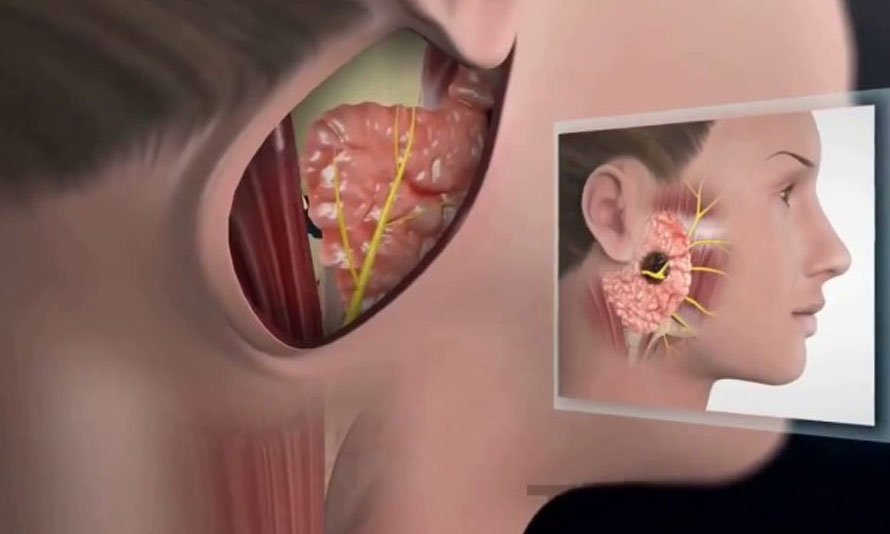
Parotid cancers
Parotid cancers are a rare group of malignancies that originate in the parotid glands, which are the largest salivary glands located on either side of the face, just in front of the ears. These tumors can vary in their characteristics and behavior, but they generally fall into three main types: benign (non-cancerous) tumors, primary malignant tumors, and metastatic tumors.
Here are some key points about parotid cancers:
1. Types of Parotid Cancers:
-
Benign Tumors: The majority of parotid gland tumors are benign, such as pleomorphic adenomas or Warthin tumors. While benign, they can cause discomfort and affect facial appearance.
-
Primary Malignant Tumors: These are cancers that originate in the parotid gland itself. The most common primary malignant tumor is mucoepidermoid carcinoma, followed by adenoid cystic carcinoma and acinic cell carcinoma.
-
Metastatic Tumors: Occasionally, cancer from other parts of the body can spread (metastasize) to the parotid gland. The most common source of metastatic parotid tumors is squamous cell carcinoma from the skin or from another head and neck site.
2. Risk Factors:
- The exact causes of parotid gland cancer are not well understood, but certain risk factors may increase the likelihood of developing these tumors. These factors may include exposure to radiation therapy to the head and neck area and, in some cases, occupational exposures.
3. Symptoms:
- Parotid gland tumors can present with various symptoms, including:
- A painless lump or swelling in front of or just below the ear.
- Facial weakness or paralysis.
- Pain or discomfort in the ear, face, or neck.
- Difficulty in swallowing or opening the mouth.
- Changes in taste.
- Enlarged lymph nodes in the neck.
4. Diagnosis:
- Diagnosis typically involves a combination of imaging tests such as ultrasound, CT scans, and MRI scans. A fine-needle aspiration biopsy or core needle biopsy may be performed to collect a tissue sample for examination under a microscope.
5. Treatment:
- Treatment of parotid gland tumors depends on the type, size, and stage of the tumor, as well as the patient's overall health. Treatment options may include:
- Surgery: Surgery to remove the tumor is the primary treatment for parotid cancers. The extent of surgery depends on the type and location of the tumor.
- Radiation Therapy: Radiation therapy may be used before or after surgery, or as the primary treatment for certain cases.
- Chemotherapy: Chemotherapy is not commonly used for all parotid cancers but may be considered for certain aggressive or advanced cases.
- Targeted Therapy: Newer treatments that specifically target cancer cells may be an option for some patients.
6. Prognosis:
- The prognosis for parotid gland cancer varies depending on factors such as the type and stage of the tumor, whether it has spread to lymph nodes or distant sites, and the success of treatment.
- Generally, benign parotid tumors have a very good prognosis after surgical removal.
- Malignant parotid tumors, depending on their characteristics, may have varying outcomes. Early detection and treatment are essential for better outcomes.
The management of parotid gland tumors requires a multidisciplinary approach involving surgeons, radiation oncologists, medical oncologists, and other specialists. Patients diagnosed with parotid cancers should work closely with their healthcare team to determine the most appropriate treatment plan based on their individual case.
